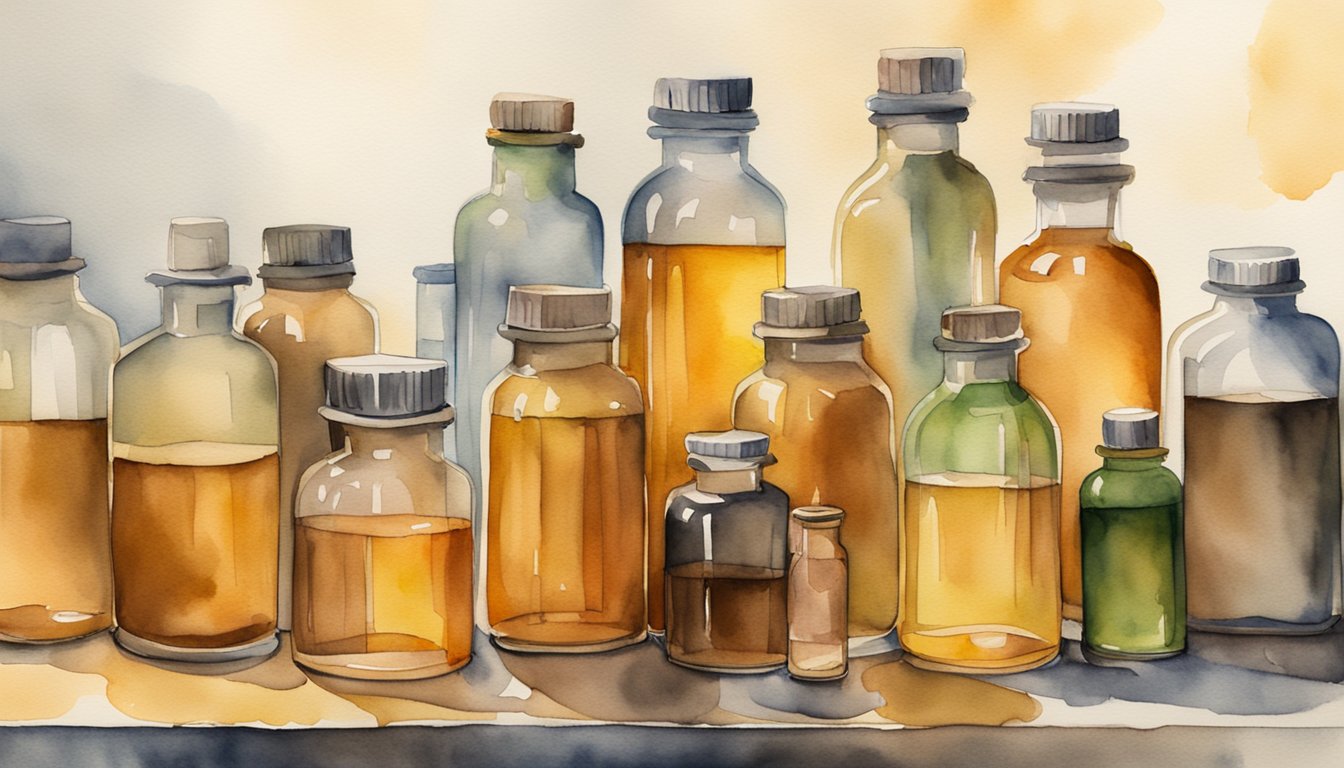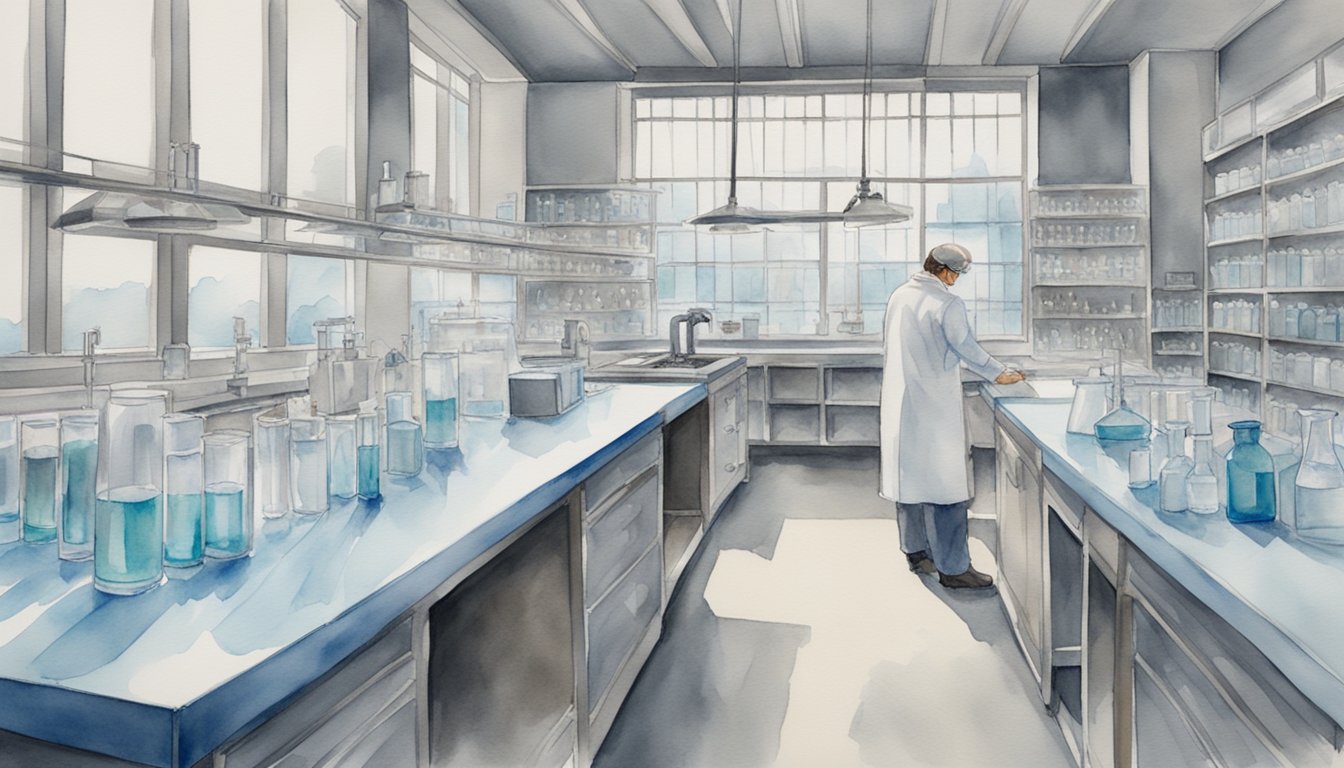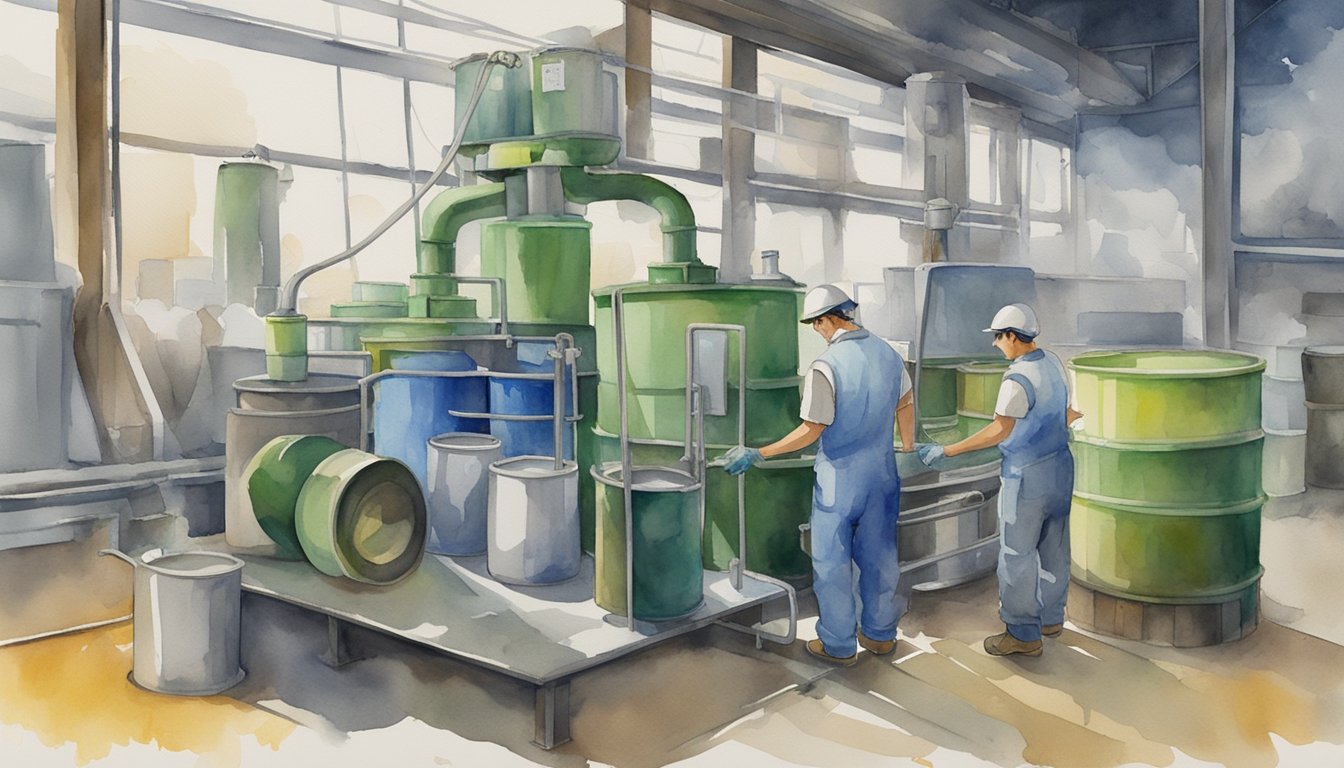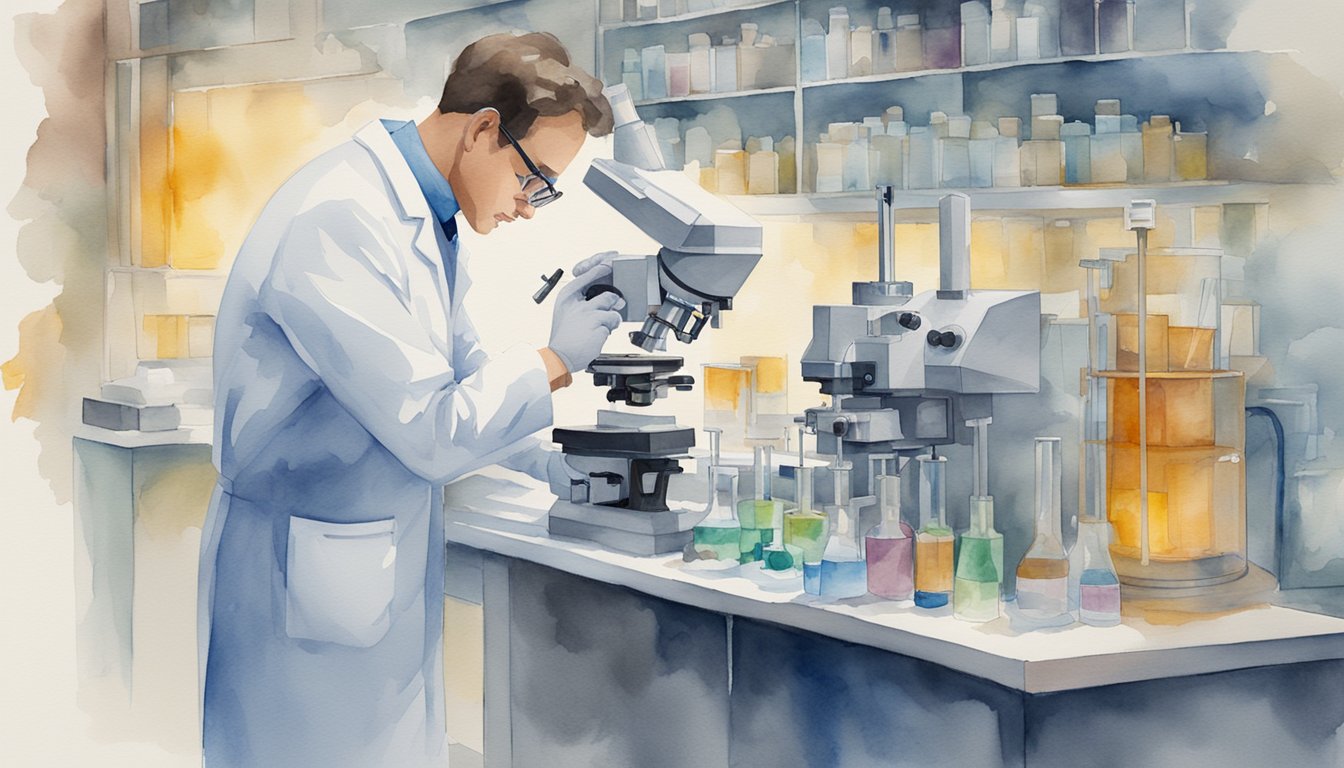There are several reasons why solvent evaporation may be applied during LC-MS. Analyte concentration reduces excess liquid volume before an MS run, especially when dealing with exceptionally small sample sizes where diluted mixtures can reduce detection capabilities. This also reduces matrix effects, which may arise when other components co-elute and interfere with the ionization process. This can occur from similar solvent properties or unexpected contaminants creating overlapping detection, ultimately producing inaccurate results. By purifying compounds, ionization can be targeted for stronger peaks and clearer results.
Evaporation Applications for Sample Preparation
Solvent evaporation may be useful in preparation for liquid chromatography but is typically an intermediary step (also known as in-line evaporation) after LC tests are complete and before a sample is introduced to a mass spectrometer. Since mass spectrometry operates under a vacuum, the liquid mobile phase after LC has properties that can easily interfere with MS detection. It is also combined with other sample preparations needed to isolate analytes, such as liquid-liquid extraction (LLE), solid-phase extraction (SPE), and protein precipitation (PPT).
-
Liquid-liquid extraction (LLE): The process of partitioning analytes between two immiscible liquid phases, typically an aqueous phase and an organic solvent. This requires vigorous mixing and is particularly beneficial for isolating non-polar compounds from polar solutions.
-
Solid-phase extraction (SPE): Involves passing a liquid sample through a column filled with solid absorbent, separating compounds based on polarity and ionic properties. This is most common for biological samples and removing undesired proteins and macromolecules.
-
Protein precipitation (PPT): By adding a precipitating agent, proteins are denatured and separated with a centrifuge. Common agents include organic solvents like acetonitrile and methanol.
These methods have different extraction focuses, such as removing certain properties, larger compounds or residues. However, they may not completely remove particulate contaminants or the solvents applied indirectly. Evaporation finishes the isolation process and often one of the last sample preparation steps for these reasons.
Solvent Evaporation Techniques
The goal with sample evaporation is to isolate analytes from solvents without damaging any compounds. In order to successfully do this, several evaporation factors should be controlled:
-
Sample type: some samples may be too delicate for certain evaporation methods, while larger volumes may require high throughput techniques.
-
Temperature: High temperatures can lead to irreversible decomposition of analytes.
-
Pressure: Lowered pressured environments can reduce boiling points and promote evaporation.
-
Solvent Properties: Solvents like acetonitrile and methanol have favorable boiling points for vaporization and solubility attributes for many types of samples.
-
Evaporation method: Different techniques have different trade-offs that may be more or less ideal conditions for a sample type.
In order to manage these parameters successfully, several techniques can be used, such as nitrogen blowdown, vacuum centrifugation, and rotary evaporation. Each has their own attributes and equipment needs suited for different types of sampling.
Nitrogen Blowdown Evaporation
Nitrogen blowdown evaporation, also known as the nitrogen gas stream method, uses a steady flow of nitrogen gas to gently remove solvents from samples. By directing nitrogen gas over the surface of the solution, solvent molecules are carried away. This technique is effective in the following:
-
allows for control over sample viscosity to best fit analytical needs
-
minimizes the risk of thermal degradation by keeping temperatures low
-
adjustable flow rate of nitrogen gas
-
allows for precise control over the evaporation process
-
accommodates various solvent types and sample volumes
The method is particularly beneficial for volatile solvents such as methanol or acetonitrile. It's suitable for larger sample volumes that require uniform evaporation, and the simplicity makes it an attractive choice for many laboratory setups with high throughput. This approach is especially advantageous when working with temperature-sensitive analytes, as solvent evaporation can be controlled with a blowdown flow rate instead of higher temperatures, helping maintain sample integrity throughout the process.
Vacuum Centrifugation
Vacuum centrifugation is another popular solvent removal technique, which relies on a combination of centrifuges and vacuums to enhance evaporation rates.
-
Centrifugal evaporation involves spinning a sample at high speeds to separate its properties by means of centrifugal force.
-
Vacuum evaporation relies on reduced pressure in order to lower boiling points and encourage evaporation.
Samples are placed in a centrifuge rotor where pressure is reduced with a vacuum system. This environment allows solvent molecules to evaporate more readily. Combining a reduced pressure and centrifugal force improves evaporation by stabilizing analytes and preventing splashing, safeguarding thorough solvent removal and reducing cross-contamination risk.
Unlike the nitrogen gas stream method, vacuum centrifugation is well-suited for handling smaller sample volumes. It excels at removing solvents from samples containing heat-sensitive compounds, as the lack of heat input preserves the integrity of delicate samples. It is also effective for minimizing any potential cross-contamination. Despite more meticulous preparation, vacuum centrifugation creates maximum control over evaporation when required.
Rotary Evaporation
Rotary evaporation uses a rotating flask to increase the surface area of a liquid, combined with reduced pressure and gentle heating. The controlled pressure and temperature protects delicate compounds from thermal decomposition. This method is excellent for removing solvents from non-volatile solutes in larger volumes. Although the equipment is relatively complex, rotary evaporation is valued for its ability to recover solvents, which can be reused or recycled in the laboratory.
Equipment and Instrumentation
Depending on your choice of evaporation method, there are a variety of instruments designed for their purposes. Below some highlighted choices made for nitrogen blowdown, vacuum centrifugation, and rotary evaporation.
Evaporators and Centrifuges
Evaporators like the RapidTrace SPE Accelerated Solvent Evaporator significantly speed up solvent extraction from samples. They are known for high throughput and are used in laboratories that focus on environmental, clinical, or bioanalytical research.
Centrifuges may be built for different types of sample needs. The Thermo Scientific mySPIN 12 is a compact benchtop option good for reliable spin rates made for LC-MS sample preparation. The Eppendorf 5425 / 5420 provides speeds up to 21,300 × g and is most commonly used for protein precipitation and particulate removal. Other high-speed options made for larger volumes include the Beckman Coulter Allegra X-14R, known for singing bucket rotors for tubes or plates, and the Thermo Sorvall ST 16R, best for large sample tubes. The Beckman Coulter Microfuge 20R and Eppendorf 5430 Rare refrigerated microcentrifuges made to retain low temperatures for particularly sensitive analytes.
Gas Supply Systems
Nitrogen blowdown requires a reliable gas supply system to gently evaporate solvents. Nitrogen Generators produce nitrogen on-demand from compressed air, which is preferred over gas cylinders for convenience, safety, and cost-effectiveness. Parker Balston (Parker Hannifin) models (N2-14, N2-35, N2-04, LCMS-500) have optional oil-free compressors and deliver 99.5–99.99% pure nitrogen with a continuous flow suited for LC-MS. Nitrogen Blowdown Evaporators directly apply nitrogen to samples, often equipped with heated blocks and multiple nozzles, such as the Organomation N-EVAP Series.
Temperature Regulation Systems
Whether you're using nitrogen blowdown, vacuum centrifugation, or rotary evaporation, temperature regulation systems can be incorporated for a controlled sample environment. Heated Nitrogen Evaporators like the Labconco RapidVap® N2 use dry heat evaporation with nitrogen with an ambient temperature range up to 100°C. The Porvair Ultravap® Series provides dry block heating for microplates or vials compatible with 96-well and 384-well formats. Vacuum Centrifugal Evaporators with Heating Control are an all-in-one system that include a vacuum, centrifuge, and temperature system; examples include the Genevac EZ-2 & HT Series and Labconco CentriVap. Heated Shakers are less common, but used for gentle evaporation with reduced pressure and mild agitation. Water and Dry Baths can be applied to manual workflows and require a separate nitrogen supply.
Evaporation Considerations for Samples
During sample preparation, consider the following variables that occur between an solvent and solute during evaporation:
-
Analyte Stability: Some analytes are prone to degradation when exposed to heat or oxygen. Use low temperatures (30–40 °C) with nitrogen blowdown or vacuum evaporation to minimize oxidation or hydrolysis.
-
Volatile Analytes: More volatile compounds tend to be lost during evaporation. Use closed or cooled systems when necessary, and track analyte concentrations before and after isolating techniques.
-
Residual Solvents: Incomplete evaporation may leave behind residual solvents (ACN, MeOH, EtOAc) that impact LC separation or MS ionization.
-
Reconstitution: Solvents used for dissolving powdered solutes into LC mobile phases should not cause phase separation or peak distortion. Start with 10–20% ACN in water with 0.1% formic acid while matching polarity to avoid poor peak shape.
-
Sample Cleanup: Ion suppression occurs if residual salts, proteins, or lipids remain in the sample. Reduce matrix effects before evaporation through SPE, filtration, or dilution.
Before MS (in-line evaporation), make sure the following is accounted for:
-
Mobile Phase Composition
-
Use high water content or salt levels to avoid ionization reduction.
-
Only apply volatile buffers, such as formic acid or ammonium acetate.
-
Avoid non-volatile buffers like phosphate and sulfate.
-
-
Desolvation Efficiency
-
Optimize source parameters including gas flow, temperature, and nebulizer pressure.
-
Use higher concentrations of organic solvents at the end of gradients to improve evaporation.
-
-
Ion Suppression/Enhancement
-
Consider post-column infusion to detect suppression zones.
-
Minimize matrix effects by repeating cleanup preparation techniques.
-
-
Spray Stability
-
Check backpressure and flow rates for stable electrospray.
-
Avoid additives like glycerol and PEG unless compatible for MS.
-
Whether you are completing evaporation steps before MS (during evaporation) or after LC (before ionization), here are common problems with potential solutions for different stages:
|
Stage |
Consideration |
Example Issue |
Solution |
|
Before MS (Evaporation) |
Analyte loss |
Volatile compounds evaporate |
Use low-temp vacuum or nitrogen blowdown |
|
|
Matrix effects |
Ion suppression from residual proteins/salts |
Use SPE or filtration before evaporation |
|
|
Reconstitution |
Incompatible solvent |
Match LC starting conditions |
|
After LC (In Ion Source) |
Ion suppression |
Co-eluting matrix |
Optimize gradient, sample cleanup |
|
|
Poor desolvation |
Low signal due to aqueous content |
Increase desolvation temp/gas or gradient organic % |
|
|
Mobile phase salts |
Ion source contamination |
Use volatile salts only |
Want to learn more about our solvents? Read more of our articles or visit us at Birch Biotech.
References:
[1] Cortese, M., Gigliobianco, M. R., Magnoni, F., Censi, R., & Di Martino, P. (2020). Compensate for or minimize matrix effects? Strategies for Overcoming Matrix Effects in Liquid Chromatography-Mass Spectrometry Technique: A tutorial review. Molecules, 25(13), 3047. https://doi.org/10.3390/molecules25133047
[2] Luo, X., & Li, L. (2023). Effects of solvent evaporation methods and Short-Term Room Temperature Storage on High-Coverage Cellular Metabolome Analysis. Metabolites, 13(10), 1052. https://doi.org/10.3390/metabo13101052
[3] O’cualain, R. (2022, August 19). Using the Thermo SPD1010 speedvac concentrator centrifuge for drying down peptides for LC-MS analysis. protocols.io. https://www.protocols.io/view/using-the-thermo-spd1010-speedvac-concentrator-cen-36wgq78qyvk5/v1
[4] Sharma, K. (2023, June 7). LC-MS: Definition, instrumentation, applications. Science Info. https://scienceinfo.com/lc-ms-instrumentation-applications/













